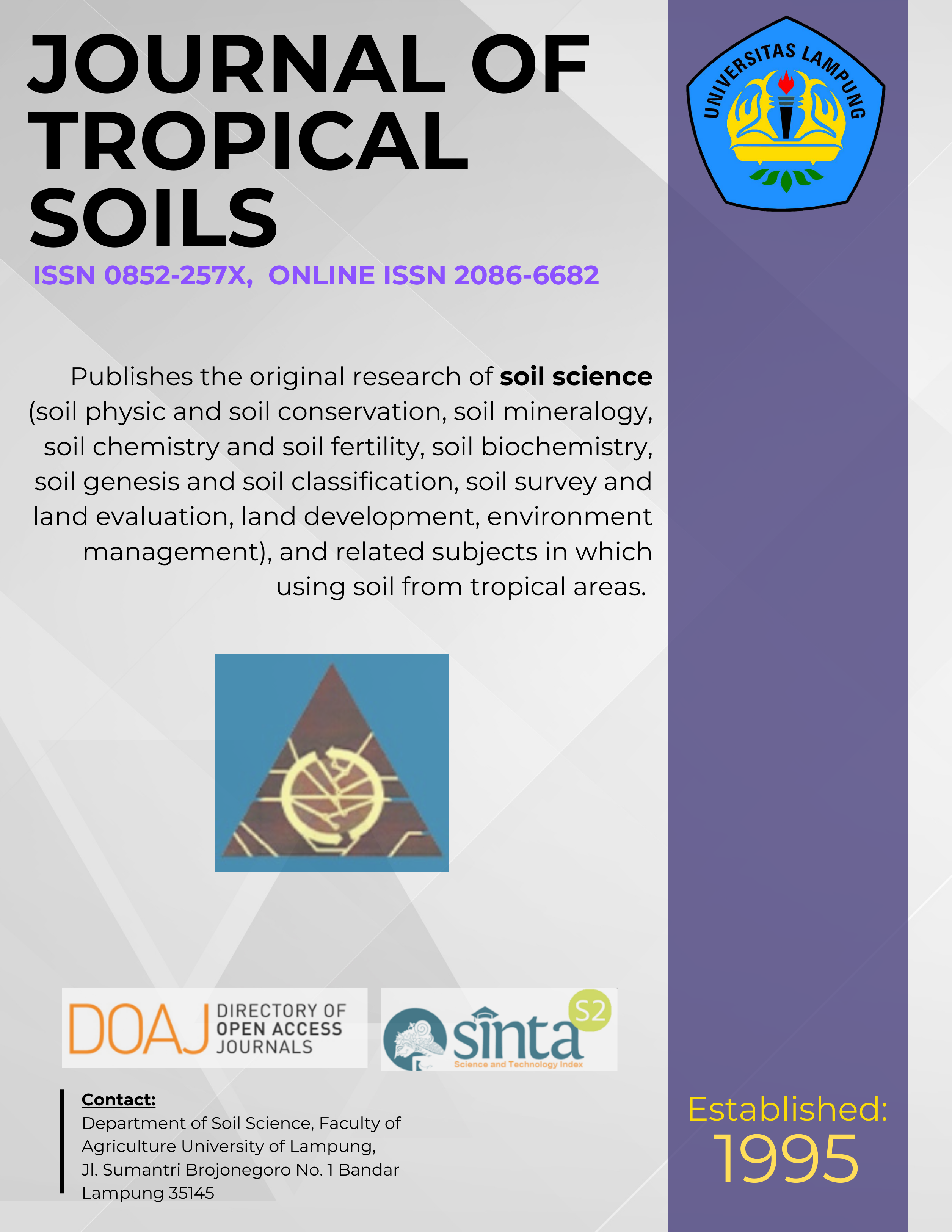The Effects of Fire on Organic Functional Groups of Peat in Relation to Water Content
Main Article Content
Abstract
The aim of this research was to study the decline of organic functional group through the process of burning in peat. In addition, this study was also to examine the relationship between water content in peat and organic functional group after combustion (burning).  Peat drying was conducted in an oven at a temperature of 75°C with the interval of 0, 1, 2, 3, 4, 5 and 6 hours.  Each time interval had three replicates within two sets of experiments so that the total number of samples were 42 (experimental units).  Variables measured were moisture content, total acidity, COOH groups, and OH-phenolate.  The relationship between the water content with total acidity, COOH groups and OH-phenolate were determined by the equation y = bx + a.  The results showed that the relationship between the water content with organic functional group was linear.  While the relationship between peat water content with organic functional group after burning was irregular, although water levels through the process of burning have been greatly reduced.Â
Keywords: Burning peat; organic functional groups; water content
[How to Cite: Said R, FH Yusran, A Haris and S Asmawi. 2014. The Effects of Fire on Organic Functional Groups of Peat in Relation to Water Content. J Trop Soils 19: 143-149. Doi: 10.5400/jts.2014.19.3.143]
Â
Â
Â
Downloads
Article Details
Section
License for Authors
Authors who publish with this journal agree to the following terms:
- Authors retain copyright and grant the journal right of first publication with the work simultaneously licensed under a Creative Commons Attribution License that allows others to share the work with an acknowledgement of the work's authorship and initial publication in this journal.
- Authors are able to enter into separate, additional contractual arrangements for the non-exclusive distribution of the journal's published version of the work (e.g., post it to an institutional repository or publish it in a book), with an acknowledgement of its initial publication in this journal.
- Authors are permitted and encouraged to post their work online (e.g., in institutional repositories or on their website) prior to and during the submission process, as it can lead to productive exchanges, as well as earlier and greater citation of published work (See The Effect of Open Access).
License for Regular Users
Other regular users who want to cite, distribute, remix, tweak, and build upon author’s works, even for commercial purposes, should acknowledge the work’s authorship and initial publication in this journal, licensed under a Creative Commons Attribution License.

